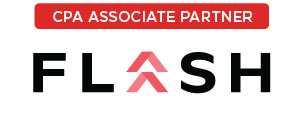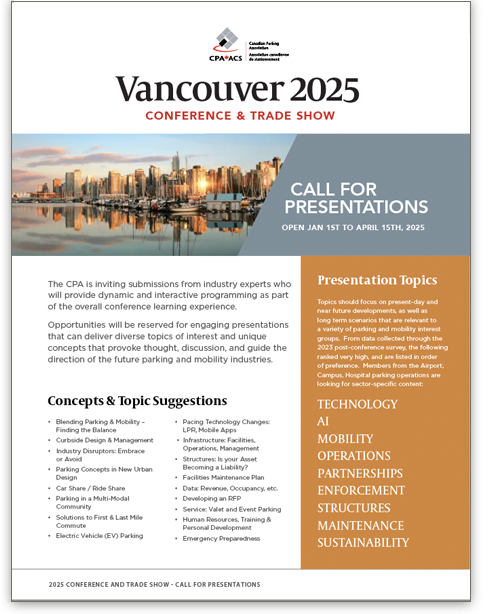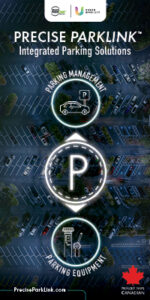Mobility Begins at the Curb
By Roamy Valera
The hottest buzz word among parking leaders right now is mobility. In fact, within and outside the industry, mobility is a primary concern for those who are tasked with shaping our communities. Accountability is being placed on those who impact our ability to move about freely, easily and safely in our urban environment. How we move however, is determined by urban planning for the future. And today, as we are on the cusp of the age of the smart city and self-driving vehicles, the future of mobility is taking shape.
Mobility is about providing efficient access to essential services, employment opportunities, and entertainment and recreational opportunities. For some, that means facilitating car travel; for some it means providing transit resources, as well as first and last mile service for transit users; and for some it means providing safe and convenient pedestrian access. The benefits of providing seamless mobility are enormous: more vibrant economic development, more sustainable communities, and a better quality of life for residents and visitors.
Parking is a critical element in the mobility piece and can make or break our ability to move around our environment efficiently. An estimated 30 percent of traffic in urban areas is caused by drivers looking for parking. How we leverage innovative technology to reduce this friction is key to solving this element and will allow those accountable to our journey to better manage the curb.
Curb Management is the Key
How we manage the curb matters. When vehicles are constantly circling blocks looking for parking, they cause congestion on roadways and pose a hazardous situation for fellow drivers and pedestrians alike. Likewise, when drivers double park, they create similar hazards. So, where do we start?
Curb management begins with Transportation Demand Management (TDM). TDM is a general term describing strategies designed to increase overall system efficiency, primarily by encouraging a shift from single-occupant vehicle trips. This typically includes promoting car pooling or the use of public transportation.
TDM strategies typically involve improving transit options; implementing a range of economic strategies; smart growth and land use policies; and other types of programs. Strategies for improving transit options can include implementing public transit improvements, introducing or improving pedestrian infrastructure, promoting carpooling or other ridesharing strategies, installing HOV priority lanes, improving taxi services, and introducing guaranteed ride home and shared bicycle services. The private sector can also play an important role by implementing flextime and telecommuting policies.
Planners can also promote TDM through a series of economic measures and incentives. Traditional approaches include fuel tax increases and distance-based fees designed to provide incentives not to drive. Parking pricing can also play an essential role, with planners establishing higher rates in overly congested downtown areas and lower rates in more remote parking and around transit stations. The idea is to encourage drivers to utilize remote parking resources and take alternative modes of transportation in downtown areas.
Next come a variety of Smart Growth and land use policies. There are a number of policies, including Transit-Oriented Development (TOD), location-efficient development, strategic parking management, car-free planning, traffic calming, and transport planning reforms that can promote curb management.
Finally, there are a number of additional approaches that don’t fit into the above three categories, or which serve specific owner needs. These include school and campus transport management, freight transport management, and tourist transport management. Each promotes efficient curb management by addressing a particular need.
Technology and Curb Management
Technology plays an essential role in curb management. The parking industry is in the midst of a technology renaissance that has seen the introduction of tools allowing drivers to pay for parking on mobile devices or even automatically and collect and analyze utilization data to allow planners and owners to manage their parking resources more effectively. When it comes to curb management, mobile parking technology is a game-changer.
A vital element of mobility management, and subsequently curb management, is convenience. The more convenient it is for drivers to access parking, the more likely drivers are to follow the rules. And when it comes to convenience, connectivity is key.
Since the iPhone was launched in 2007, smart phones have become ubiquitous. It’s estimated that more than 5 billion people—about 2/3 of the world’s population—own at least one mobile phone. Of cell phone users in the United States, 77% own smartphones. We use our smartphones every day, all day long, to shop; to get directions; to keep up with the news; to communicate with family, colleagues, and friends; and to complete a dozen other tasks that require connectivity.
Since connectivity is such an important part of our day-to-day lives, it makes sense that it would play a vital role in transportation and parking. In fact, mobile technology can connect people to all elements of the parking and mobility experience. It gives people control over their route and transportation via GPS and mapping apps, and once the driver arrives at his or her destination, it provides the most convenient payment option.
Payment is considered major “pain point” for drivers. In the age of connectivity, drivers want to park and pay quickly and simply via mobile phone without any additional cost or route deviation. Mobile payment platforms reduce the friction by allowing drivers to pay with their cellphones, extend time remotely and receive smart parking reminders.
This sentiment is echoed by Joe Koontz, Regional Vice President, Western Washington Diamond Parking Service, “Providing drivers with a mobile payment option helps ease their commute, prevents them from waiting in line at a payment machine and provides a good experience for our parkers. Consistency with convenience is invaluable and your parking destination becomes a preference when faced with choice.”
This solves the connectivity issue without reliance on being connected with infrastructure.
Mobile technology provides control over one’s mobility but also gives urban planners insight into how the curb side value can be optimized. In summary; convenience, connectivity and reliability for drivers and smart cities alike.
Technology synergies between infrastructure and mobile payment also reduce the friction for cities and towns by providing an “asset-light” solution that provides long term benefits in terms of cost, longevity and valuable data allowing operators to optimize on rates. Looking to the future, mobile payment technology will also be a key element of the success of smart cities and smart parking. Already several luxury vehicle brands are considering including mobile payment technology in their vehicles. With this technology, the cars themselves will be able to pay for parking once they’ve found a spot. It’s likely that it won’t be long before every car features this technology.
Providing Mobility for All Users
Curb management is essential for successful mobility. When we successfully manage the right of way, we make roadways safer and reduce—hopefully eliminate—congestion. Parking technology already plays an essential role in curb management, and as current technologies are enhanced and new ones are introduced, it will play an even larger role. Ultimately, curb management improves mobility for all users, including drivers, pedestrians, and public transportation patrons.
Roamy Valera is CEO, Canada and US for PayByPhone. He can be reached at rvalera@paybyphone.com.






